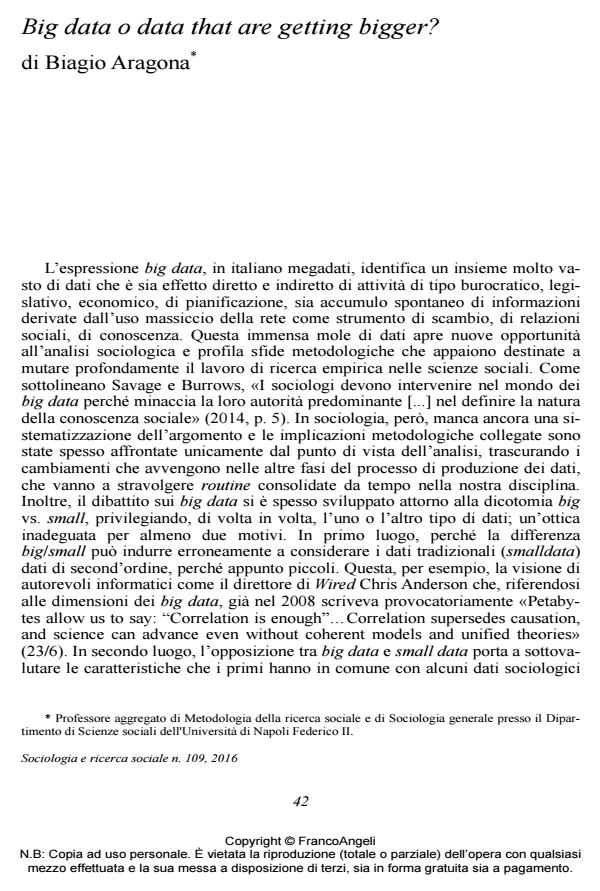Big data or Data that is Getting Bigger?
Journal title SOCIOLOGIA E RICERCA SOCIALE
Author/s Biagio Aragona
Publishing Year 2016 Issue 2016/109
Language Italian Pages 12 P. 42-53 File size 59 KB
DOI 10.3280/SR2016-109005
DOI is like a bar code for intellectual property: to have more infomation
click here
Below, you can see the article first page
If you want to buy this article in PDF format, you can do it, following the instructions to buy download credits

FrancoAngeli is member of Publishers International Linking Association, Inc (PILA), a not-for-profit association which run the CrossRef service enabling links to and from online scholarly content.
The potential of Big Data for sociology is being recognized broadly, but there is still a wide gap between its potential and its realization. One of the reasons is that Big Data encloses types of data which are very different. This articles aims to identify the features of Big Data that are common to other traditional sociological data such as registers, traces and documents. Secondly, its purpose is to propose a typology of Big Data based on four criteria: data origin, flexibility, presence of operational definitions, presence of metadata. Finally, the main methodological issues deriving from the different phases of the data production process are presented for every type of Big Data.
- Big data in policy making Biagio Aragona, Rosanna De Rosa, in Mathematical Population Studies /2019 pp.107
DOI: 10.1080/08898480.2017.1418113
Biagio Aragona, Big data o data that are getting bigger? in "SOCIOLOGIA E RICERCA SOCIALE " 109/2016, pp 42-53, DOI: 10.3280/SR2016-109005